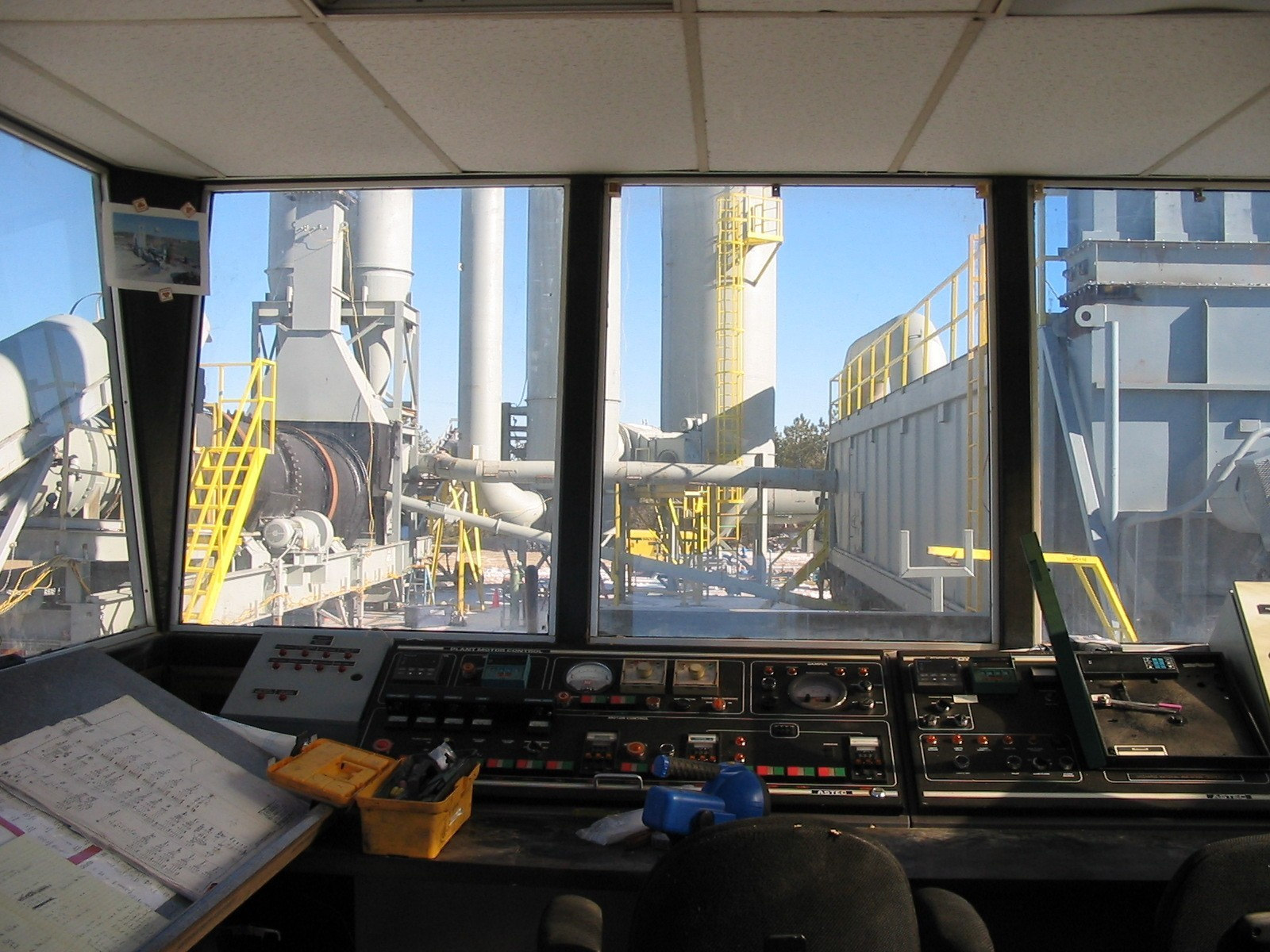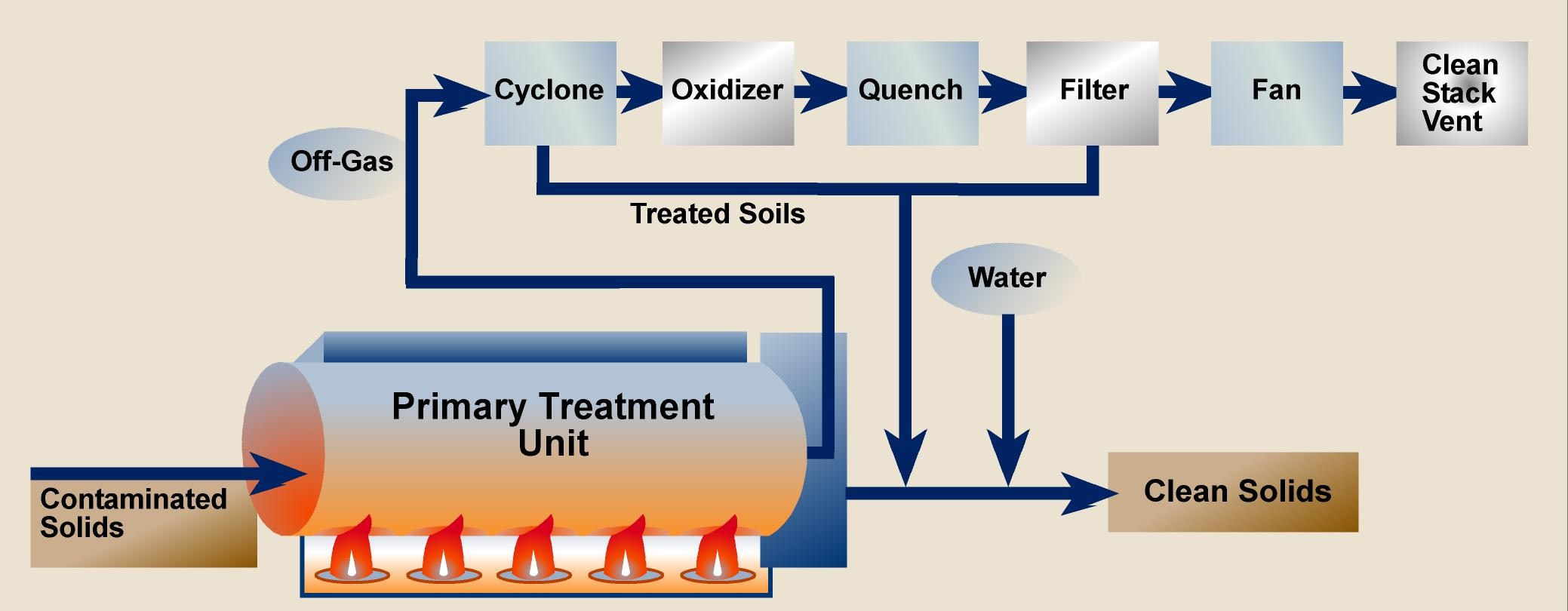What is Thermal Desorption
Spring 2004 Fact Sheet 2004-02

Thermal Desorption is a process used to remove
contaminants from the soil. Temperatures between 500
to 1,100 degrees Fahrenheit (°F) are used to physically
separate moisture and contaminants from the soil.
The exhaust created by this process is collected by an air
pollution control system and heated to temperatures of
approximately 2000°F to destroy the contaminants. The
exhaust is then filtered to remove any remaining dust
particles from the air stream.
Cleaned soil and air are discharged from the
treatment system. Tests on the soil treated by Thermal
Desorption systems typically show a reduction in
contamination to below detectable concentrations. Soil
not treated to acceptable levels is returned to the system
and retreated to achieve required cleanup parameters.
How it Works

The Thermal Desorption system uses heat to separate
contaminants from the soil and then thermally destroys them.
Once rocks and other debris are removed, the soil is fed into
the primary treatment unit. Inside this rotating drum, soil is
heated to between 500 and 1,100°F (775°F is the optimum
temperature for soils at Camp Edwards.) These temperatures dry
the soil, burn off any organic material and drive off contaminants
from the soil, so that they are caught in the exhaust or off-gas.
The continuous tumbling ensures all of the soil is exposed to the
heat for the appropriate time period.
While contaminants are captured in the off-gas, treated soil is
discharged from the primary treatment unit and rehydrated with
clean water to reduce the soil temperature and control dust
emissions.
Treatment of the contaminants continues as the off-gas flows
through the air pollution control system. As it spins through the
cyclone, the soil particles caught in the off-gas are removed
before the off-gas moves into the thermal oxidizer. Using
temperatures of up to 2,000°F the oxidizer destroys any
remaining contaminants, transforming them into nitrogen, water
and carbon dioxide.
In the quench or cooling chamber, clean water is used to cool
the off-gas to a temperature that can be handled by the filtering
system.
The air pollution control system then uses air filters to pull any
remaining treated particles of soil out of the air. A sonic pulse is
used to periodically disengage the collected particles from the
filter and deposit them in the treated soil stream. The filtered offgas
is then discharged.
An air permit, issued by the Massachusetts Department of
Environmental Protection will ensure all emissions meet state requirements.
Discharged soil is sampled to confirm that treatment is
effective. Once sample results confirm that cleanup goals have
been met, soil cleaned through this process can be used for fill in
site restoration.
Proven Process
The Thermal Desorption system has been proven to
successfully treat soil contaminated by explosives
chemicals similar to those found at Camp Edwards. In a
similar use at the Kansas Army Ammunition Plant, the
Thermal Desorption system removed explosives
chemicals, including RDX, HMX and TNT to levels below
what can be detected by approved U.S. Environmental
Protection Agency (EPA) laboratory methods. Similar
results were seen at the Iowa Army Ammunition Plant.

Treatability Study for Camp Edwards
To address soil contamination at Camp Edwards, a a
Treatability Study was conducted to determine the ability
of the Thermal Desorption system to remove perchlorate
from soil. Perchlorate is a water- soluble salt, used as an
oxidizer in munitions and solid fuels for rockets and
missiles. It also is used in, fireworks, safety flares, airbags
and other items. It has been found in soil and
groundwater at Camp Edwards.
The study conclusively verified that Thermal
Desorption successfully treated perchlorate to levels
below what can be detected using approved EPA
laboratory methods.
|



